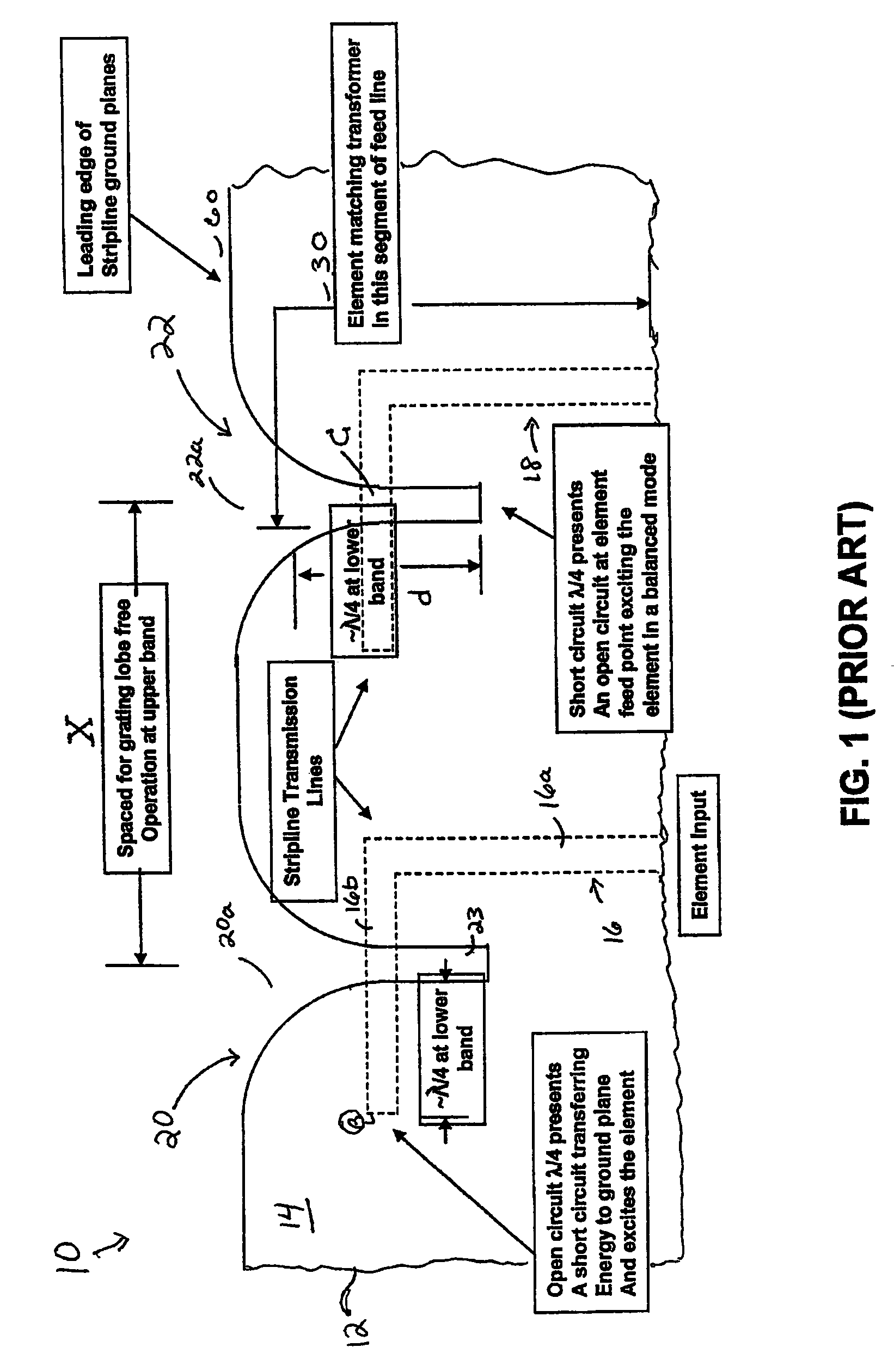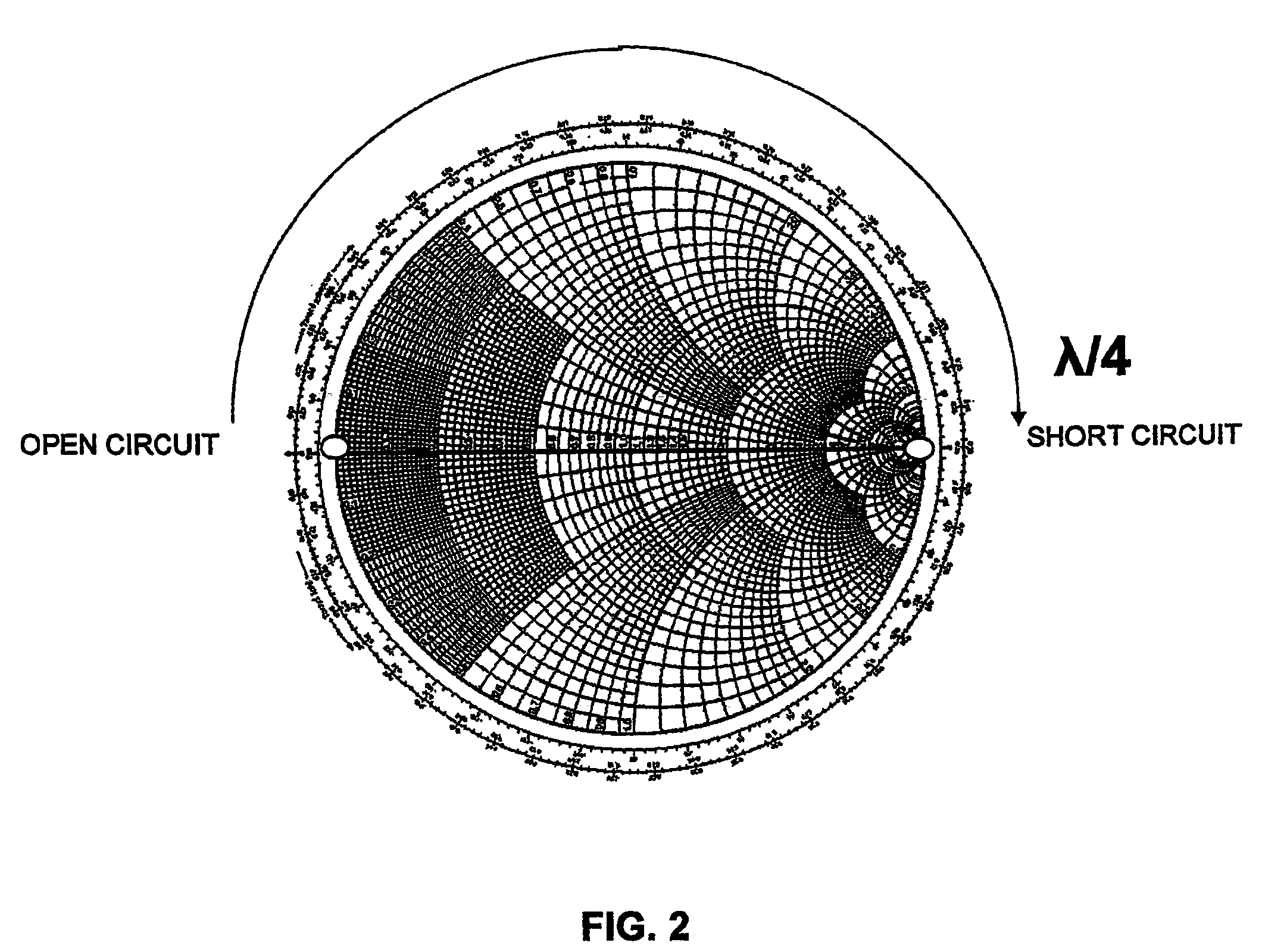Passive self-switching dual band array antenna
a self-switching, dual-band array technology, applied in the direction of antennas, radiating element structural forms, resonance antennas, etc., can solve the problems of insufficient coverage of both bands, inability to adequately cover both bands, and variations in dipole construction. to achieve a structure that provides both sufficient bandwidth and physical configurable within the element grid
- Summary
- Abstract
- Description
- Claims
- Application Information
AI Technical Summary
Benefits of technology
Problems solved by technology
Method used
Image
Examples
Embodiment Construction
[0016]It is to be understood that the figures and descriptions of the present invention have been simplified to illustrate elements that are relevant for a clear understanding, while eliminating, for the purpose of clarity, many other elements found in radar or communications systems and methods of making and using the same. Those of ordinary skill in the art may recognize that other elements and / or steps may be desirable in implementing the present invention. However, because such elements and steps are well known in the art, and because they do not facilitate a better understanding of the present invention, a discussion of such elements and steps is not provided herein. Moreover, it is to be recognized that the passive radiating antenna elements and their feed structure are reciprocal devices, behaving analogously in a receiving mode as in a transmitting mode. Thus, while the behavior of the elements and their feed structure may be described herein in the receive mode, it should b...
PUM
 Login to View More
Login to View More Abstract
Description
Claims
Application Information
 Login to View More
Login to View More - R&D
- Intellectual Property
- Life Sciences
- Materials
- Tech Scout
- Unparalleled Data Quality
- Higher Quality Content
- 60% Fewer Hallucinations
Browse by: Latest US Patents, China's latest patents, Technical Efficacy Thesaurus, Application Domain, Technology Topic, Popular Technical Reports.
© 2025 PatSnap. All rights reserved.Legal|Privacy policy|Modern Slavery Act Transparency Statement|Sitemap|About US| Contact US: help@patsnap.com



